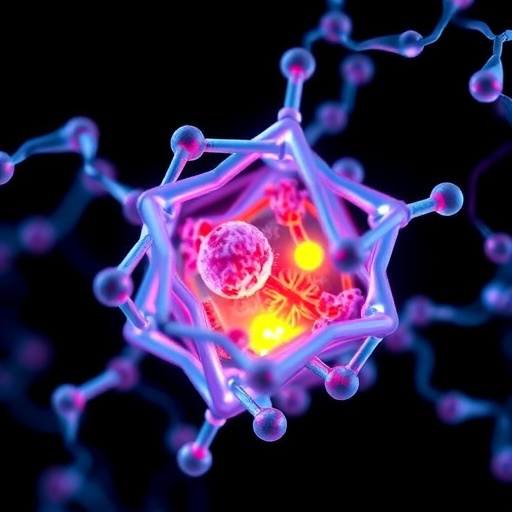In the relentless quest for higher-performance rechargeable lithium-ion batteries (LIBs), understanding the underlying chemistry at the electrolyte–electrode interface has emerged as an imperative frontier. This interface, though nanoscopically thin and deceptively simple in appearance, governs critical processes that determine battery longevity, safety, and efficiency. A major focus of battery research over the past decades has been the solid–electrolyte interphase (SEI), a passivation layer formed on the electrode surface that mediates ion transport and prevents continuous electrolyte degradation. Despite its central role, characterizing the SEI’s delicate, low-crystallinity composition remains an extraordinary experimental challenge.
A recent breakthrough study now offers fresh insight into this enigmatic interphase, particularly focusing on lithium fluoride (LiF), a component widely recognized as instrumental in SEI stability. The research, spearheaded by Liu, Li, Yuan, and colleagues, uses a suite of advanced solid-state nuclear magnetic resonance (NMR) techniques, including detailed ^19F and ^6Li isotope NMR spectroscopy, synergized with synchrotron X-ray diffraction and cryogenic electron microscopy (cryo-EM), to unravel the heterogeneous nature of LiF within the SEI. This comprehensive approach reveals that LiF in the SEI exists not as a uniform compound but as a complex solid solution incorporating lithium hydride (LiH), forming distinct hydrogen-rich and fluorine-rich phases.
Such nuanced chemical heterogeneity—comprising H-rich phases denoted as LiH_1−yF_y and F-rich phases symbolized as LiF_1−xH_x—represents a paradigm shift from the classical perception of LiF as a singular phase. The coexistence of these two types of solid solutions within the SEI layers not only challenges long-held assumptions but also provides a mechanistic explanation for the enhanced electrochemical properties observed in high-performance batteries. Notably, this mixed-phase LiF–LiH solid solution exhibits superior ionic conductivity compared to pure LiF, implying that the subtle interplay of hydrogen and fluorine atoms modulates the transport pathways critical for efficient lithium-ion shuttling.
The identification of lithium hydride within the SEI is especially intriguing, given its potential to transform our understanding of how battery interfaces function at the atomic level. Prior to this study, LiH was largely overlooked in the interphase framework, possibly due to its reactive nature and the analytical difficulties associated with detecting such phases in situ. The authors overcame these hurdles by leveraging isotope labeling and advanced spectroscopic resolution, enabling the differentiation of lithium environments that were previously indistinguishable.
Furthermore, the study systematically compares SEIs formed from various electrolyte formulations, revealing that the prevalence of the hydrogen-rich LiH_1−yF_y phase strongly correlates with electrolytes known to deliver higher coulombic efficiencies. This suggests that tailoring electrolyte chemistries toward promoting LiH-enriched SEI regions may represent a strategic route for constructing more resilient battery interfaces. Beyond simply cataloging chemical species, this work underscores the functional consequences of SEI heterogeneity for ion transport and battery performance.
In a compelling proof-of-concept experiment, the researchers engineered coating layers rich in the LiH_1−yF_y phase and demonstrated their superiority over conventional LiF-rich coatings in lithium-metal batteries—a battery system plagued historically by dendrite formation and limited cycle life. These findings pinpoint the importance of meticulously tuning the interphase’s microscopic composition to enhance macroscopic electrochemical properties such as stability, conductivity, and ultimately, battery durability.
The combination of cutting-edge characterization tools showcased in this study highlights the power of interdisciplinary approaches in advancing battery science. The synergy of solid-state NMR, synchrotron X-ray techniques, and cryo-EM allows for an unprecedented peek inside the elusive SEI, providing spatially and chemically resolved insights that conventional surface analyses could not achieve. This integrative methodology sets a new standard for future interface investigations.
Moreover, the insights gleaned about the LiF–LiH solid solution may inspire novel electrolyte design paradigms, moving beyond classical formulations to those purpose-built to foster beneficial interphase architectures. By controlling the balance of lithium fluoride and hydride species, battery chemists could pave the way for interfaces that combine mechanical robustness with enhanced ionic transport, addressing some of the critical bottlenecks that limit battery lifetimes and safety.
This refined picture of SEI chemistry also opens the door to revisiting existing theoretical models that simulate interphase formation and evolution. Current models typically treat the SEI as chemically uniform or consider only a handful of phases; incorporating heterogeneous LiF–LiH solid solutions will add necessary realism, enabling more accurate predictions of interfacial behavior under different operational conditions.
Ultimately, this discovery reframes the narrative surrounding lithium fluoride, recasting it from a simple passive component to a dynamic and chemically rich participant in SEI functionality. This nuanced understanding supports the broader objective of rational interface engineering—tailoring molecular-scale features to achieve transformative effects in battery operation.
Looking forward, the study encourages expanded exploration of other potential solid solution phases within the SEI, including those involving different anion or cation substitutions. Such endeavors could uncover additional pathways for optimizing interphases, thereby enhancing a wide range of electrochemical devices beyond LIBs.
In summary, the work by Liu and colleagues represents a watershed moment in battery interface science. By decoding the heterogeneous coexistence of LiF and LiH within the SEI, it not only deepens fundamental knowledge but also guides the design principles necessary for next-generation energy storage technologies. As the push for more efficient, longer-lasting batteries continues to intensify, such fundamental revelations will be critical in steering innovation toward truly transformative outcomes.
Subject of Research: Characterization of lithium fluoride (LiF) heterogeneity in the solid electrolyte interphase (SEI) of lithium-ion batteries using advanced solid-state NMR, synchrotron X-ray diffraction, and cryo-electron microscopy.
Article Title: Probing the heterogeneous nature of LiF in solid–electrolyte interphases
Article References:
Liu, X., Li, S., Yuan, C. et al. Probing the heterogeneous nature of LiF in solid–electrolyte interphases. Nature (2025). https://doi.org/10.1038/s41586-025-09498-7
Image Credits: AI Generated
Tags: advanced NMR techniques in battery researchchemical heterogeneity in battery electrolytescryogenic electron microscopy in materials scienceimproving ion transport in solid-state batterieslithium fluoride roles in solid electrolyteslithium hydride interactions in SEIlithium-ion battery performance enhancementrechargeable battery longevity and safetySEI composition and stabilitysolid-electrolyte interphase characterizationsynchrotron X-ray diffraction applicationsunderstanding electrolyte-electrode interface





